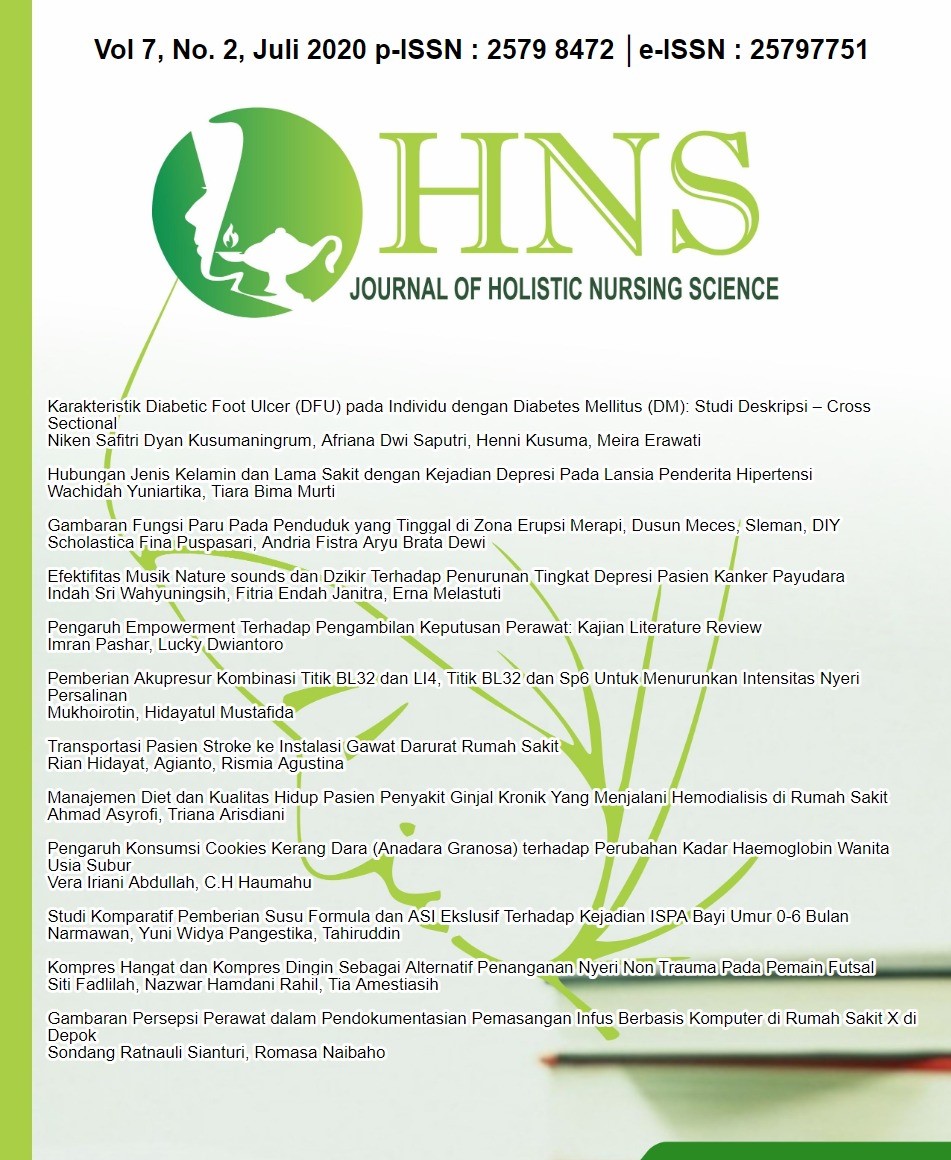Pemberian Akupresur Kombinasi Titik BL32 dan LI4, Titik BL32 dan Sp6 Untuk Menurunkan Intensitas Nyeri Persalinan
Main Article Content
Abstract
Labor pain is a physiological condition that most experienced by all women giving birth. Labor pain of the active phase is caused by cervical dilatation and distention of the uterine corpus. The purpose of this study was to determine the differences of acupressure effect on the combination of BL32 (Ciliao) and LI4 (Hegu) points with BL32 (Ciliao) and SP6 points (Sanyinjiao) toward the intensity of labor pain. The research design used Quasy Experiment with the approach of Pretest-Posttest Control Group Design with the Purposive Sampling technique. The population of this study was all maternity women at PMB Siti Zulaikah Jogoroto Jombang. The sample in this study was 22 respondents who include to the inclusion and exclusion criteria. The pain scale instrument used was the Numeric Rating Scale (NRS). The data were analyzed by using Paired T-Test and Independent T-Test with α ≤ 0.05. The results have shown that there was an effect of acupressure in both intervention groups on the intensity of labor pain with a value of p = 0.000 (p <0.05). There were no differences in the influence between the two intervention groups (4.09 ± 1.044 vs 4.82 ± 0.982; p = 0.108 (p>0.05). Acupressure on BL32 (Ciliao) and LI4 (Hegu) point combinations with BL32 points (Ciliao) and SP6 point (Sanyinjiao) effectively reduce the intensity of labor pain so it can be used as an alternative non-pharmacological intervention in reducing labor pain intensity.
Downloads
Article Details

This work is licensed under a Creative Commons Attribution 4.0 International License.
Authors who publish their articles in JHNS retain full copyright of their work. JHNS does not require authors to transfer their copyright to the journal or Universitas Muhammadiyah Magelang as the publisher. The authors grant JHNS a license for the first publication.
